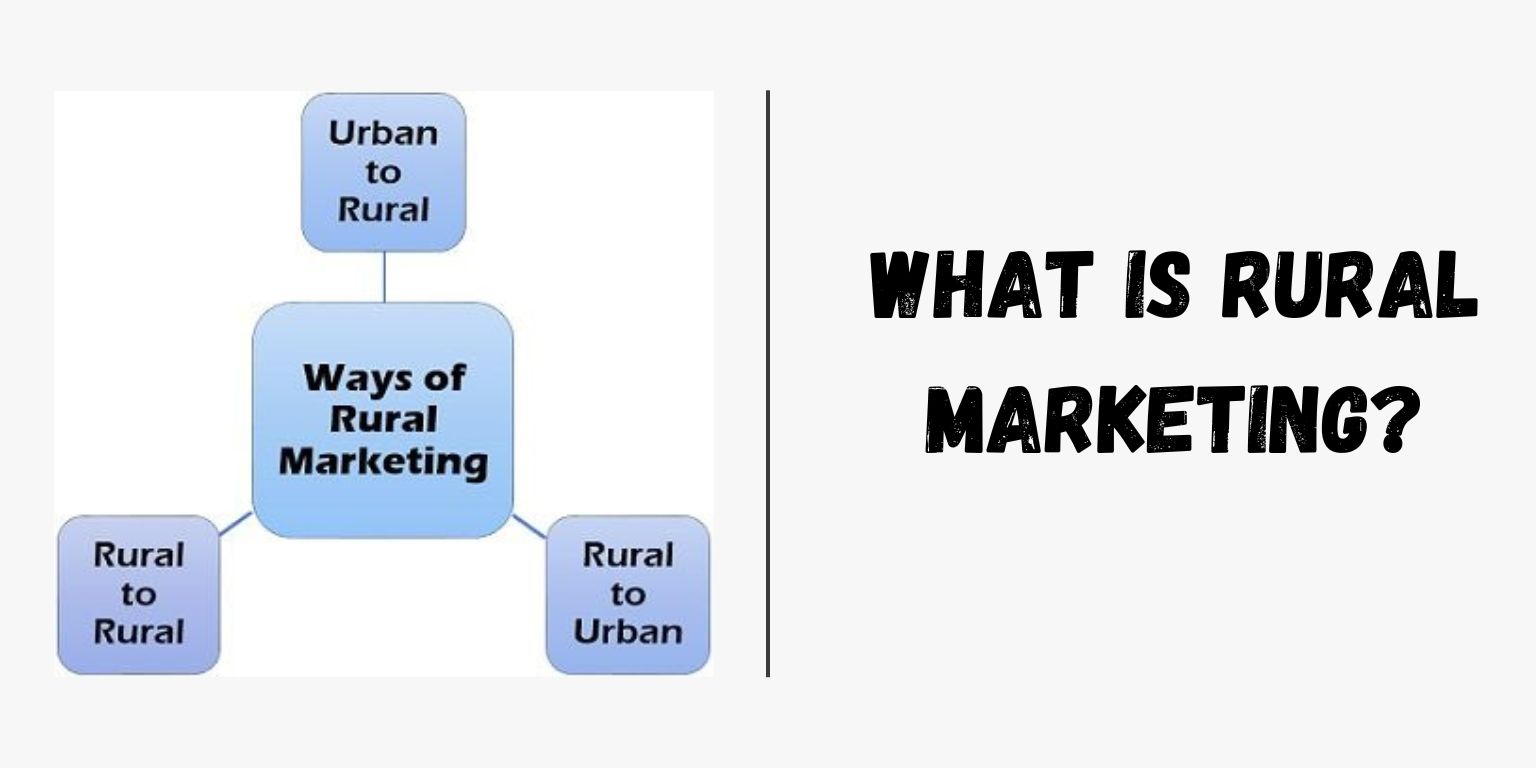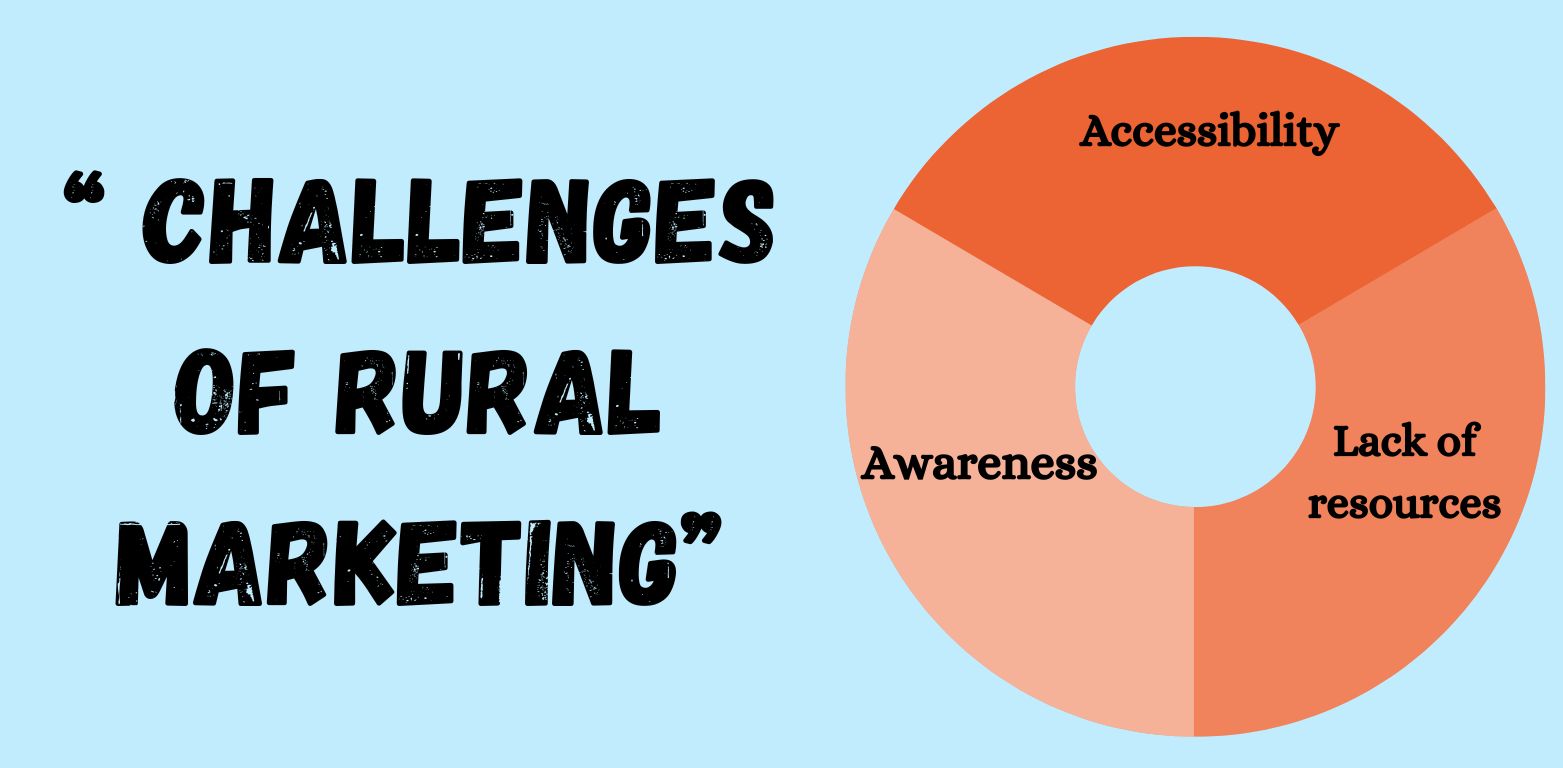Table of Contents
ToggleWhat is Rural Marketing?
To understand “what is rural marketing?”, we need to understand what is a rural market first. Gone are the days when people used to travel from rural areas to cities and towns to fulfill their basic needs.
Rural markets have evolved over time from not existing, to setting up weekly to a proper marketplace over time. Rural marketing as a concept is very different from urban-centric strategies or digital marketing. It requires a unique approach and proper research before getting into it properly.
A SWOT analysis is necessary before even setting up a shop in a rural market. The strengths would be different, weaknesses uncommon, opportunities rare, and techniques and tools important. To understand rural marketing better, we need to know the basics that surround a rural market. Rural Marketing encompasses all the activities and strategies employed to reach and engage consumers in the nearby rural areas.
When we look at rural markets from an urban perspective, we imagine a small marketplace selling basic items of need. Well, that’s not at all how rural markets have emerged in the past few years. More shops are emerging in rural areas selling more than goods of need. From jewellery shops to private salons, rural markets are not lagging in anything. In this blog, we will learn more about rural marketing, its importance, characteristics, challenges, strategies, examples, and recent trends.
What is Rural Marketing: Importance
There’s no way we can understate the importance of rural marketing in today’s times. With the evolvement and emergence of rural markets in the manner it has done in the past few years, its importance has only grown. Let us take a look at some reasons we cannot understate the importance of rural marketing:
- Reduced urbanization: In the older days, people from rural areas used to move to urban centers for facilities that were not available in the countryside. With the emergence of markets and other facilities, urbanization has decreased as there are more opportunities for people.
- Economic growth in the rural areas: Rising marketplaces are responsible for not just providing necessary means of survival or more to the people in the countryside but it has also improved the economic state of the rural side of India significantly.
- Employment Generation: With a market comes jobs. Be it a helper, shopkeeper, salesperson, or mason for constructing the shops, the employment growth in the rural areas is huge.
What is Rural Marketing: Characteristics
To understand the characteristics of a rural market, we need to understand the characteristics of a regular marketplace. It is different from an urban marketplace but also similar in so many ways. Some unique characteristics are:
- Infrastructure problems: Rural areas do not have facilities similar to urban marketplaces. We have malls and supermarkets in urban cities, whereas in rural areas we would rarely find those. It’s usually a small shop selling all the products.
- Lack of diversity: In urban areas, we have people coming from all walks of life whereas in rural areas, it’s usually the villagers from a common village or the nearby villages, so it’s usually homogeneous.
- Disparity in income: In rural areas, earnings are usually seasonal, especially with people selling agricultural produce. If in a particular season, their field did not reap anything, their income is limited.
- Less anonymity: in rural areas, people usually know each other, the communities are quite close-knit, and people know each other well, unlike urban areas where nobody knows each other and people even prefer it that way. They prefer to be anonymous.
What is Rural Marketing: Challenges
It is obvious that rural areas face more challenges compared to urban areas in so many ways, be it the availability of resources, budget, or facilities. Let us take a look at some of the commonly face challenges by people in the rural market.
- Accessibility: The people in rural areas have limited access to resources. Even reaching remote areas is difficult for people. There is still a long way to go in making rural areas accessible for people coming from outside.
- Lack of resources: There is a severe lack of resources in rural areas. Sometimes it could be land, budget, legal documentation, and sometimes even customers. Even if someone has a vision to create something big in the rural marketplace, it won’t succeed as the audience isn’t necessarily interested in it.
- Awareness: There is a severe lack of awareness in rural markets. Either people are not aware of the methods and ways in which they can evolve or there’s a lack of awareness when it comes to the people residing nearby. New and innovative ideas do not find easy access in rural areas due to the lack of awareness amongst the villagers and people living nearby.
There is still a long way to go for rural marketing to evolve and improve. Efforts are definitely being put in and with time, it will eventually evolve and rural marketing will be similar to urban marketing.
What is Rural Marketing: Strategies
Some specific strategies can be taken up and followed to help rural marketing evolve into a modernized version at par with the technologies and methods used by urban marketers.
- Skill development and education programs: People in the rural markets can be shifted from a goods-based industry to a service-based industry by providing the necessary skills and education & outreach programs for the people operating in rural markets to upskill and move into the service-based industry.
- New distribution channels: As rural markets lack accessibility, new and innovative distribution channels can be introduced for better trading. A few examples are mobile shops, and weekly markets that shift from place to place every week.
What is Rural Marketing: Examples
Rural marketing is not a new-age idea. Big brands have been doing and taking initiatives to improve it for a long time now. We have some famous examples of the same:
- Coca-Cola: One of the most famous soft drinks brands in the world came up with a very creative idea of ‘Chota Coke’ to reach out to the rural public. To bridge the gap between the fancy drinks of the urban population and its reach to the rural areas, coca-cola provided soft drinks at a mere price of Rs. 5. It interestingly increased the sales of the company by 60%. Needless to say, it was a very good initiative in the direction of improvement of rural marketing.
- Asian Paints: The most popular paint brand in India came up with a very creative idea on the basis that people in rural areas trust more in other people’s experiences and word-of-mouth. So, they painted Mukhiya’s house with brand new colors to advertise their non-chipping paint. After looking at Mukhiya’s house, people started thinking highly of Asian Paints’ paint colours improving their sales.
Future Trends Of Rural Marketing
Looking at the growth rural marketing has achieved in the past few years, the future trends seem quite poised. Let us take a look at what we can expect from rural marketing in the future:
- The wave of digitization: Every sphere of the marketplace is influenced by digitization or it is entirely digitized itself. The day is not far when rural marketing will also shift towards the digital side of things as more and more people from rural areas are using smartphones and going on the internet.
- E-commerce expansion: Almost all marketplaces have shifted to the e-commerce space where people are able to order from the comfort of their homes and the items reach them in due time. Seeing the trends and the popularity e-commerce has managed to receive, the day is not far when rural marketing will also have an e-commerce corner.
- Adopting Sustainable Approaches: As sustainability and social responsibilities of businesses are much highlighted these days, rural marketing is also moving towards that path. People in rural markets are becoming more environment-friendly (they always were, compared to urban marketers) and moving towards adopting sustainable practices in the process.
How to do practically do rural marketing
Implementing Rural Marketing practically needs a holistic approach. All the facets of the situation need to be taken under consideration, be it accessibility, affordability, or availability of resources. The following steps can be followed for a better understanding:
- The first and foremost step of every marketing system is conducting thorough consumer market research. For a better understanding of the culture, the people, and the socio-economic behavioral dynamics, market research is the first step.
- Following the market research, a marketing strategy needs to be developed that could be followed in the rural market that will cover all the dynamics discovered in the research.
- An advanced distribution network and channels should come into place to meet headfirst with the accessibility challenges faced by people in rural markets.
- As mentioned above, It’s time to develop more skill-based marketers as the inclination towards service-based industry is quite high in the market these days. Proper skill development will be a boon for rural marketing.
- Once all the marketing strategies are in place and practiced thoroughly, it is also very important to keep a continuous monitor over the newly established ways and methods. A deep analysis will keep the marketers in the loop of the developments happening and the changes needed.
Our learning from rural marketing
Rural Marketing is at an all-time high during these times and the potential to tap into this field is huge. Big brands recognised this potential long ago and they entered into the rural markets and earned huge profits. But it’s time to give the rural market a chance to develop and come out of the shell itself. All the steps and future trends mentioned above are a chance for the rural markets to create something bigger and turn around the rural market economy.


